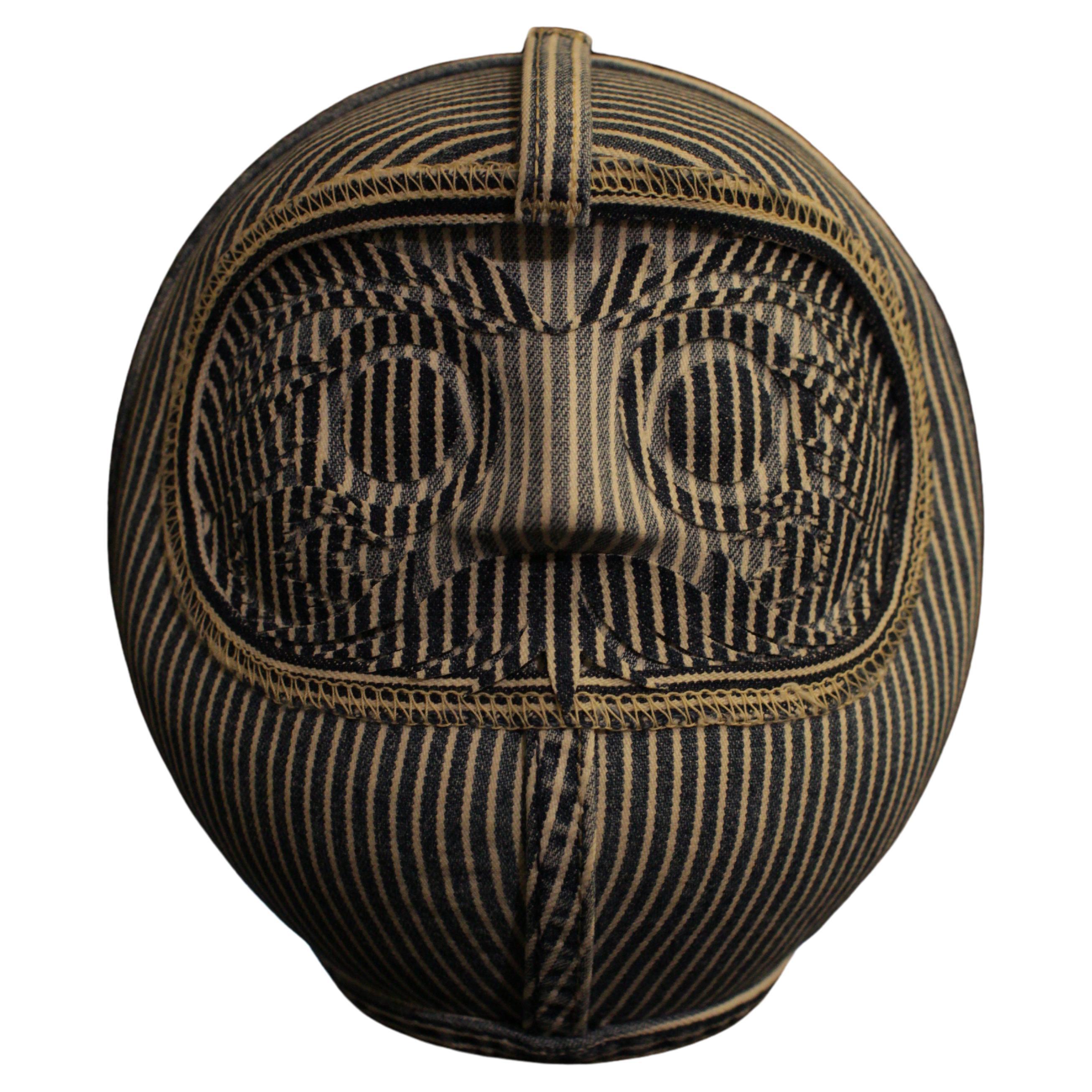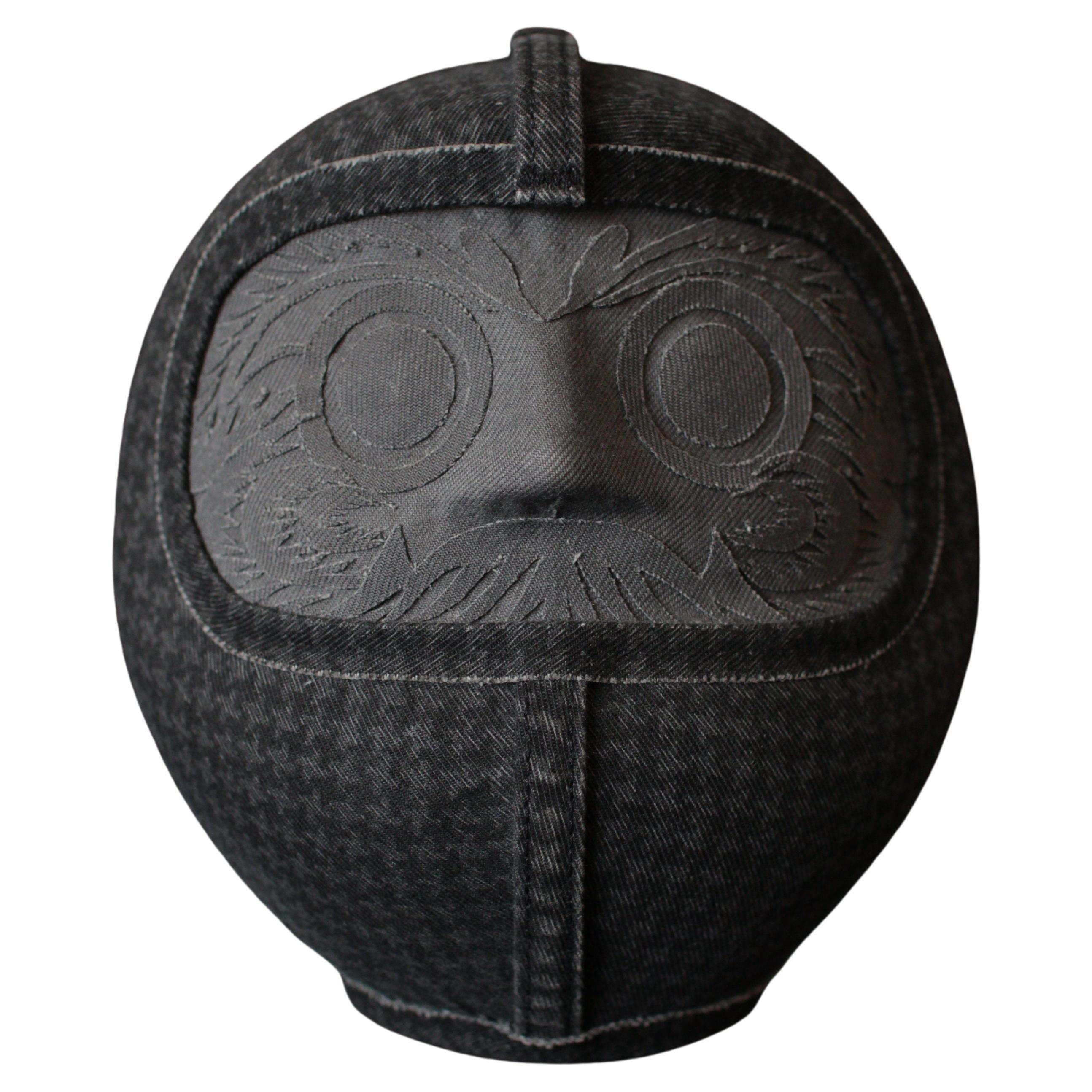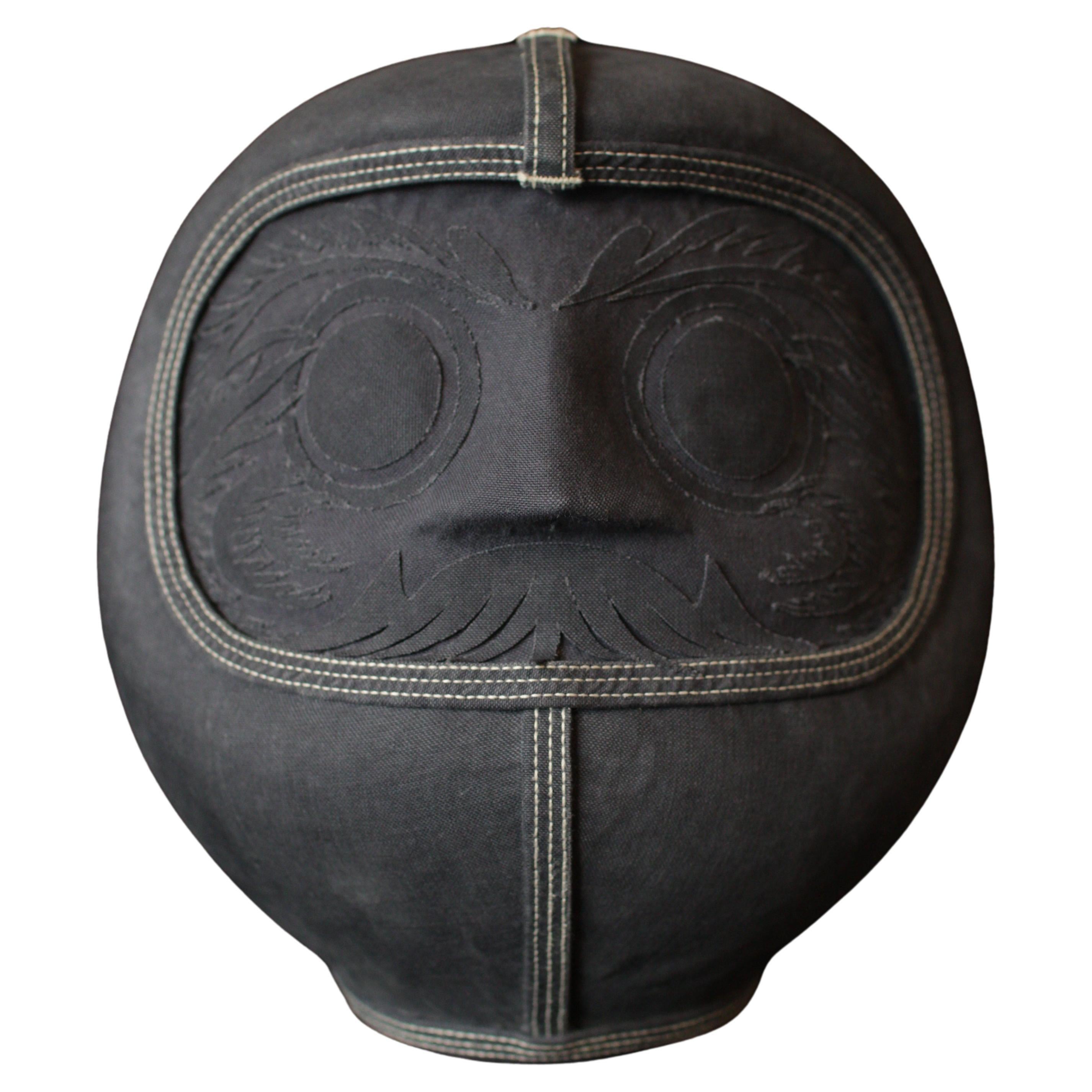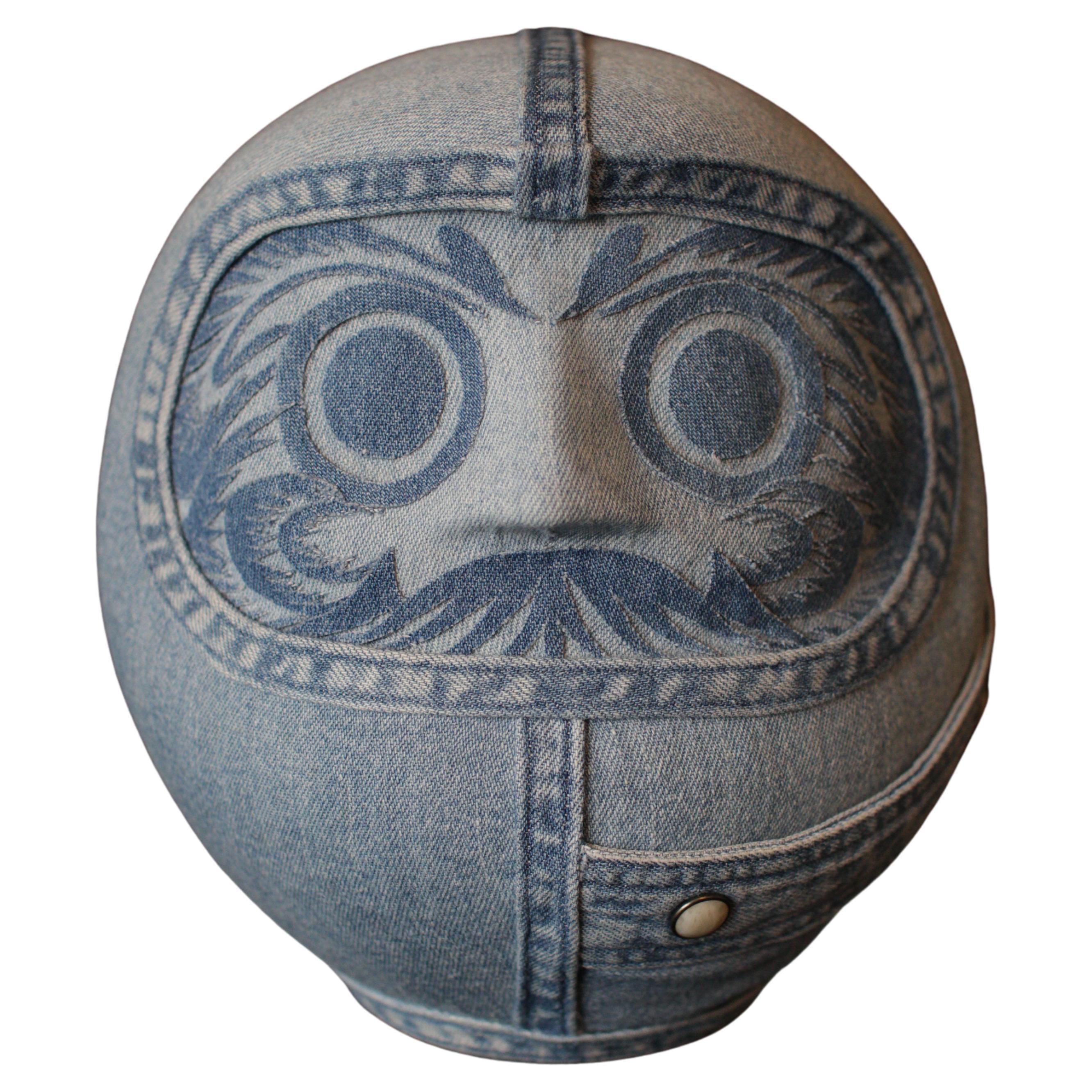Items Similar to Shambray Daruma
Want more images or videos?
Request additional images or videos from the seller
Shambray Daruma
About the Item
Daruma is a traditional Japanese figurine that means to get up again and again even after falling down.
It has been loved as a decoration to ward off evil or to express wishes for about 400 years.
The meaning of the face beard is the crane for the eyebrows, the turtle for the cheek hairs, and the beard for Mt.
Crane and turtle mean longevity in Japan.
Fuji is the highest mountain in Japan, so it means to maximize one's ability.
This ACRAFT Denim Dharma is a piece of denim that is disassembled and made entirely by hand.
Before you put this Dharma in your place, I hope that you can confine your thoughts towards this Dharma, such as your own goals and beliefs.
As the Dharma is always watching over your feelings, please live a life that is not ashamed of the feeling you had when you first set the Dharma. And please enjoy it as a work of art.
- Dimensions:Height: 7.68 in (19.5 cm)Width: 6.5 in (16.5 cm)Depth: 6.5 in (16.5 cm)
- Style:Japonisme (In the Style Of)
- Materials and Techniques:
- Place of Origin:
- Period:
- Date of Manufacture:2024
- Production Type:New & Custom(One of a Kind)
- Estimated Production Time:Available Now
- Condition:
- Seller Location:Yokohama, JP
- Reference Number:1stDibs: LU8327239239782
About the Seller
No Reviews Yet
Vetted Seller
These experienced sellers undergo a comprehensive evaluation by our team of in-house experts.
1stDibs seller since 2023
- ShippingRetrieving quote...Ships From: Yokohama, Japan
- Return PolicyA return for this item may be initiated within 14 days of delivery.
More From This SellerView All
- Hickory DarumaBy Aoi ShimizuLocated in Yokohama, JPDaruma is a traditional Japanese figurine that means to get up again and again even after falling down. It has been loved as a decoration to ward off evil or to express wishes for ...Category
2010s Japanese Japonisme Decorative Art
MaterialsFabric, Canvas, Cotton
- Daruma Black&GrayBy Aoi ShimizuLocated in Yokohama, JPDaruma is a traditional Japanese figurine that means to get up again and again even after falling down. It has been loved as a decoration to ward off evil or to express wishes for ...Category
2010s Japanese Japonisme Decorative Art
MaterialsFabric, Canvas, Cotton
- Denim Daruma IndigoBy Aoi ShimizuLocated in Yokohama, JPDaruma is a traditional Japanese figurine that means to get up again and again even after falling down. It has been loved as a decoration to ward off evil or to express wishes for ab...Category
2010s Japanese Japonisme Decorative Art
MaterialsCanvas, Cotton
- Unstitched Denim DarumaBy Aoi ShimizuLocated in Yokohama, JPDaruma is a traditional Japanese figurine that means to get up again and again even after falling down. It has been loved as a decoration to ward off evil or to express wishes for ...Category
2010s Japanese Japonisme Decorative Art
MaterialsFabric, Canvas, Cotton
- Painter Daruma CharcoalBy Aoi ShimizuLocated in Yokohama, JPDaruma is a traditional Japanese figurine that means to get up again and again even after falling down. It has been loved as a decoration to ward off evil or to express wishes for ...Category
2010s Japanese Japonisme Decorative Art
MaterialsFabric, Canvas, Cotton
- Denim Daruma ButtonBy Aoi ShimizuLocated in Yokohama, JPDaruma is a traditional Japanese figurine that means to get up again and again even after falling down. It has been loved as a decoration to ward off evil or to express wishes for ...Category
2010s Japanese Japonisme Decorative Art
MaterialsFabric, Canvas, Cotton
You May Also Like
- "the Japanese and the Oriental" Plaques, Attri. to L. Hottot, France, circa 1900By Louis HottotLocated in PARIS, FRImportant pair of metal with double patina plaques representing an Oriental woman and a Japanese woman, both dressed in traditional outfits, during the tea ceremony. Each is presente...Category
Antique Early 1900s French Japonisme Decorative Art
MaterialsMetal
- Japanese Antique Silk and Cotton TapestryLocated in Milano, ITWonderful and very rare Japanese tapestry made in the 1900s, made of woven silk and cotton, of absolute fineness. The tapestry is developed in length ...Category
Antique Early 1800s Japanese Japonisme Decorative Art
MaterialsFabric, Silk
- Original Antique Print of Japanese Cloisonne Enamels, Dated 1876Located in St Annes, LancashireGreat image of cloisonne enamels Chromo-lithograph after A. Willms Published by Sutton Sharpe & Co. 1876 Unframed. It gives you the option of perhaps making a set up using y...Category
Antique 1870s English Japonisme Prints
MaterialsPaper
- Vintage Japanese Ceremonial Kimono Gold Brocade with Flying CranesLocated in North Hollywood, CAA vintage Mid-Century ivory color silk brocade collectable Japanese ceremonial kimono. One of a kind hand crafted. Fabulous museum quality ceremonial piece in pure silk with intricat...Category
20th Century Japanese Japonisme Textiles
MaterialsSilk
- Japanese Antique Fukusa Textile Art Meiji PeriodLocated in Atlanta, GAA Japanese silk Fukusa panel circa late 19th-early 20th century of Meiji Period. The front was beautifully decorated with Yuzen-zome, a labor intensive resist-dye technique invested ...Category
Early 20th Century Japanese Japonisme Textiles
MaterialsSilk, Beads
- Japanese Antique Fusuka Textile Art Meiji PeriodLocated in Atlanta, GAA Japanese silk Fukusa panel circa late 19th-early 20th century of Meiji Period. The front was beautifully decorated with Yuzen-zome, a labor intensive resist-dye technique invested by an artist monk Miyazaki Yuzensai (1654 -1736) of Edo period. The auspicious composition features a group of red-crown cranes, the symbol of longevity. Three of them perch on the rock by the ocean (East Sea) an two of them are in flight. Additionally, two egrets frolic in the wave. Yuzen dying was used extensively to showcase the amazing details such as the waves and the gradual coloring effect. Embroidery was used sparsely to highlight areas such as the legs of the crane to render it more dimensional details. The piece has a red silk backing and still retains four blue tassels on corners as well as decorative stitches along the edges. Fukusa is a traditional Japanese textile...Category
Early 20th Century Japanese Japonisme Textiles
MaterialsBrocade, Silk





